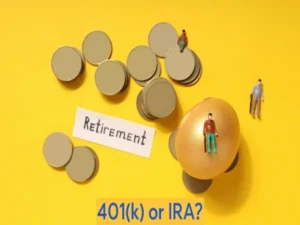Can you write a check from a savings account? In short, the answer is no. Investors often use savings accounts for interest but need help to write checks from them. Instead, consult a financial advisor to find the best approach for managing your money effectively.
Indeed, federal regulations prohibit customers from writing checks directly from their savings accounts. While savings accounts may offer access through ATMs or debit cards, using a debit card for purchases directly from a savings account is generally restricted. If the need arises for both earning interest on balances and the ability to write checks, exploring other account options, such as a checking account, is recommended.
Check-Writing Limitations: Can you write a check from a savings account?
These alternative accounts often provide increased flexibility and earning potential compared to a conventional savings account. Always consult with your bank to understand the specific terms and conditions associated with different account types to meet your financial needs effectively.
Alternative Ways to Make Payments From a Savings Account
Online Transfers: Leverage online banking platforms to initiate secure and convenient fund transfers.
ACH Payments: Set up Automated Clearing House (ACH) transactions for electronic transfers, commonly used for recurring payments.
Wire Transfers: Facilitate quick and direct transfers domestically or internationally, suitable for larger transactions.
Debit Cards: Use a linked debit card associated with your savings account for point-of-sale transactions, providing accessibility to various merchants.
Bill Pay Services: Many banks offer bill pay services, allowing you to schedule and automate payments directly from your savings account.
Mobile Banking Apps: Access your savings account through mobile banking apps, offering a user-friendly interface for managing and making payments on the go.
Money Orders: Purchase money orders as an alternative payment method for specific transactions, especially when checks are not feasible.
Electronic Wallets: Link your savings account to digital wallets, enabling contactless payments through platforms like Apple Pay, Google Pay, or Samsung Pay. These methods provide flexibility and adaptability to diverse payment needs, catering to the modern and dynamic financial landscape.
Read also: Finance vs Banking: Difference Between Finance and Banking
Can you write a check from a savings account: Uncovering Interesting Facts
Although less common, writing a check from a savings account is subject to various factors. Here are five interesting facts about this practice:
Bank Restrictions: Many banks impose restrictions on writing checks from savings accounts. These may include limits on the number of monthly checks or fees per transaction. Few banks may require a minimum balance to qualify for check-writing privileges.
Saving vs. Spending: Savings accounts are designed for accumulation and interest, not regular spending. Unlike checking accounts tailored for daily transactions, writing checks from savings is best reserved for exceptional situations, not routine payments.
Online Banking Flexibility: Due to the digital era, online savings accounts often offer more flexibility for electronic check writing. However, users should review the terms and conditions, considering any associated fees or limitations.
Enhanced Security: Writing checks from savings may involve enhanced security measures, such as additional verifications or dual signatures for larger transactions. These precautions aim to safeguard both account holders and banks from potential fraud.
Alternative Payment Methods: Despite the option to write checks from savings, alternative methods like debit cards, electronic transfers, or automatic bill payments better suit modern needs.
These alternatives offer greater convenience, efficiency, and faster transaction processing, eliminating the traditional check-clearing wait period. Consider these options based on your specific financial preferences and requirements.
Read also: Floating vs Fixed Interest Rate: Which is better for home loan
What is a savings account?
A savings AC is a financial product banks offer where individuals can deposit money for safekeeping and earn interest over time. Savings AC provides a secure way to store funds while allowing account holders limited access.
Although savings accounts typically offer lower interest rates than investments, they are a low-risk option for short-term financial goals and emergency funds. Withdrawals are regulated, and there may be limitations on the number of transactions allowed each month.
Understanding the Contrast: Checking vs. Savings Accounts
Key points differentiating checking and savings accounts include:
Transaction Purpose
- Checking accounts are for daily transactions.
- Savings accounts focus on accumulating funds over time.
Access and Flexibility
- Checking accounts offer frequent access with features like checks and debit cards.
- Savings accounts may limit withdrawals to promote savings.
Interest Rates
- Savings accounts generally offer higher interest rates.
- Checking accounts typically have lower or no interest.
Liquidity
- Checking accounts provides high liquidity for immediate needs.
- Savings accounts encourage long-term saving with limited liquidity.
Fees and Minimum Balance
- Checking accounts may have more fees but lower minimum balance requirements.
- Savings accounts may have higher minimum balances but fewer fees.
- Understanding these distinctions helps individuals choose the right account based on their financial goals and usage patterns.
Read also: Fake Bank Statement: How Do You Spot and Prevention It [Best Tips]
Key Steps to Writing a Check from a Savings Account
Step 1: Confirm the Bank’s Policies
Before writing a check from your savings account, familiarize yourself with your bank’s policies. Each financial institution may have specific rules governing check writing from savings accounts, such as withdrawal limits and associated fees.
Step 2: Ensure Sufficient Funds
Maintaining a healthy balance in a savings account is paramount. A bounced check not only incurs fees but can also tarnish your financial reputation. We investigate strategies to ensure your savings account has the necessary funds for a seamless check-writing experience.
Step 3: Properly Fill Out the Check
Accuracy is key when filling out a check from your savings account. From the payee’s name to the amount in both words and figures, we provide a detailed guide to prevent errors that could lead to complications.
Addressing Common Concerns and Misconceptions
Myth 1: Savings Accounts Don’t Allow Check Writing
Contrary to popular belief, many savings accounts do offer check-writing privileges. We explore the nuances of this feature and how it can be effectively utilized.
Myth 2: Writing Checks from Savings Affects Interest Rates
Some worry that frequent check writing from a savings account may impact interest rates. Our article dispels this myth, shedding light on how prudent financial management can mitigate potential drawbacks.
Advanced Tips for Optimizing Check Writing from Savings Accounts
Utilizing Online Banking Tools
In the digital age, online banking provides a convenient avenue for managing savings accounts. We delve into the benefits of leveraging online tools to monitor your account, set up alerts, and streamline the check-writing process.
Exploring Alternatives: Money Market Accounts
For those seeking enhanced flexibility, we explore the option of money market accounts. These accounts often blend features of savings and checking accounts, offering a middle ground for individuals with diverse financial needs.
Read also: What Qualifications Need for Public Finance Investment Banking Job.
The Bottom Line
In conclusion, while writing checks directly from a savings account is generally rare, some banks may offer this option with certain restrictions. It’s crucial to check with your specific bank to understand their policies, potential fees, and any limitations on check-writing from a savings account.
Customers cannot write checks against their savings accounts due to federal regulations. Consider alternative payment methods, and weigh the benefits of a checking account if frequent check-writing is required. Always be informed about your account’s terms and conditions to make the best financial decisions based on your needs and preferences.
FAQs: Can you write a check from a savings account?
Q1: Can you write a check from a savings account?
A1: Not all savings accounts offer check-writing capabilities. You should check with your bank to see if your savings account allows check writing.
Q2: Are there any fees associated with writing a check from a savings account?
A2: Some banks may charge a fee for each check transaction or require a minimum balance to be maintained in your savings account to avoid fees.
Q3: How many monthly checks can I write from my savings account?
A3: Many banks limit the number of monthly checks you can write from your savings account. The specified limit varies depending on the bank and account type.
Q4: Can I write a check from my online savings account?
A4: Online savings accounts may offer check-writing capabilities. However, it is essential to check the terms and conditions of your specific online savings account to understand any limitations or fees.
Q5: Can I use a savings account to pay regular bills?
A5: While possible, savings accounts are not typically designed for regular bill payments. It is advisable to use a checking account for this purpose.
Q6: Can I write another person a check from my savings account?
A6: You can write a check from your savings account to another person or entity, provided your bank allows it.
Q7: Can I cash a check written from a savings account?
A7: You can typically cash a check written from a savings account if you have sufficient funds.
Q8: Can I deposit a check into my savings account?
A8: Yes, you can deposit a check into your savings account. However, it is important to note that savings accounts usually limit the number of deposits allowed per month.
Q9: Are there any disadvantages to writing checks from a savings account?
A9: Some disadvantages include restrictions imposed by banks, potential fees, and savings accounts not designed for regular spending.
Q10: What information do I need to write a check from my savings account?
A10: To write a check, you typically need the recipient’s name, the date, the amount, and your signature.
Q11: Can I use a savings account check for large transactions?
A11: Some banks may require additional security measures, such as dual signatures, for larger transactions. It is best to check with your bank regarding their specific policies.
Q12: Can I write a post-dated check from my savings account?
A12: You can write a post-dated check from your savings account. However, the recipient may wait until the date specified on the check to cash it.
Q13: Can I use a savings account check for online purchases?
A13: While using a savings account check for online purchases is possible, it is not a common practice. Debit cards or online payment methods are typically used for online transactions.
Q14: Can I write a check from my savings account if I have overdraft protection?
A14: Overdraft protection is typically associated with checking accounts, not savings accounts. You should check with your bank regarding their specific policies on overdraft protection for savings accounts.







